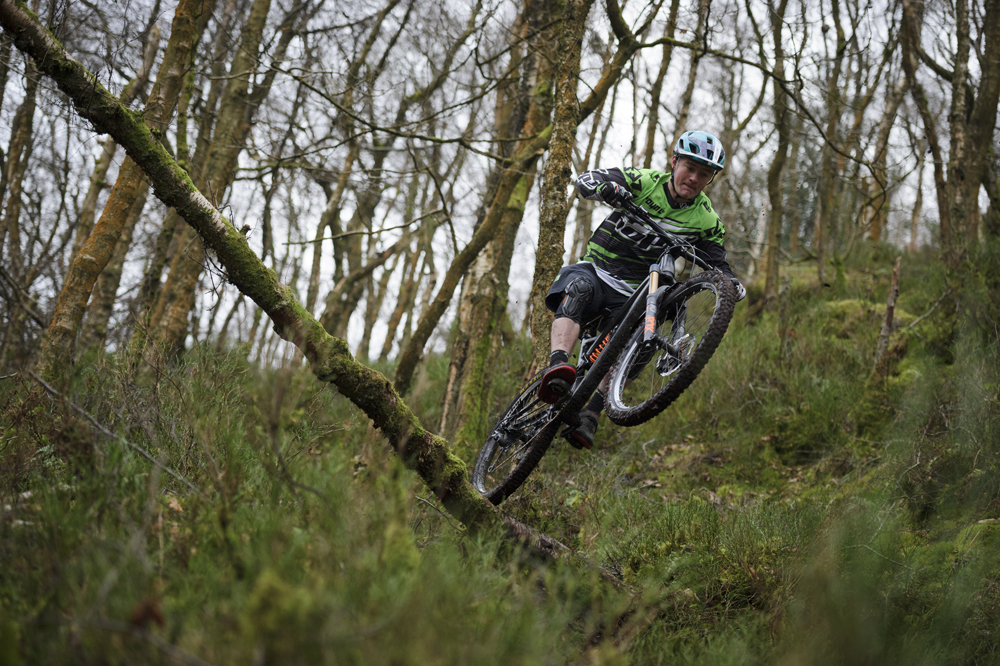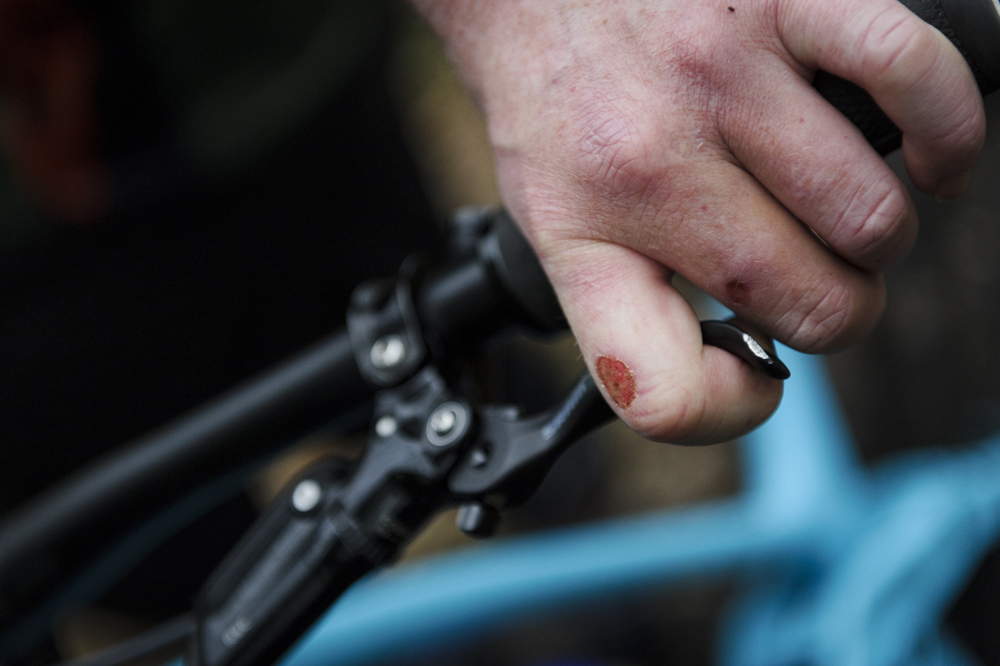Skills for natural bike riders
Don’t limit yourself to trail centres in winter – develop the skills to tackle rewarding natural singletrack.
If you’re riding natural trails at this time of year then you’re well aware how much more difficult they become in the wet. Some riders prefer to take it easy and stick to easier trail centres, but with a few simple changes to your technique and mindset and you’ll find yourself riding with more control and confidence than ever.
Room to move
The biggest thing you’re going to have to stay on top of to conquer natural trails is your range of motion. You can get away with an upright technique on easier trail centres, but when you’re riding natural trails in winter there is going to be a lot of movement. You’re never going to be able to stop your tyres from sliding on roots, or going a little sideways on sloppy mud, but instead of panicking why not just open up more room to move? That way when it happens you can allow for a lot more of it before it throws your balance off. Try and keep your head in the middle of your bars so that you’re alway coming back to a solid, confidence inspiring neutral riding position.
Look for grip
The entire trail is going to be full of features that will put you off. Tree stumps, roots, loose rocks, mud, puddles with hidden obstacles… the list goes on. You will however have grip around all of these things though, so instead of worrying yourself the whole way down, look for the grip. It sounds so simple, but if you are deliberately taking your gaze from one positive aspect of the trail to another then you’ll have a much more positive experience overall. Just look for the places that you want to be and you’ll soon forget about the places that put you off and knock your confidence.

Weight management
With your lower stance on the bike sorted, and you eyes trained for all the grip points on the trail, it’s not time to think about how you generate more grip by pushing off the ground. An exaggerated version of this might look like you’re bunnyhopping all the obstacles and features as you go, but what you should actually be thinking about is generating a heavy push on the parts of the trail that you can trust. That way you’re heavy on the smother sections and lighter on the rougher bits.

Brake it up
As soon as a rider feels out of their comfort zone they’ll go for the brakes. This might help if you genuinely want to come to a stop, but on a lot of natural trails the go to system of control will have the opposite affect and actually lose you traction and balance. Instead, try and pick your moments and do a lot of deliberate braking where you can trust the ground. That way you can start to rely on better, more predictable grip when you’re off the brakes on the choppier stuff. Safe braking zones will make a huge difference to how much control you have.

Guess work
If you’re riding a new trail, or even if you’re doing one that looks a bit different than how you remember, you’ll need to get better at guessing where it goes. A great way of doing this is to follow another rider down. Leave a bit of a gap, after all you don’t want to follow them into a crash, but if you can at least see the direction that the trail goes in next then that’ll be a big advantage. Failing that; if you’re the one leading down, or if you’re out on your own, then try and keep your head up and watch for the tell tail signs. Heavy braking means something steep or sharp is coming up, a downward traverse will likely have a consistently exposed side the whole way down, and trees will always have roots coming off them in an outward facing pattern, so depending on where you are you can perhaps start to predict what the pattern will like be before you actually see it. The main thing though is to keep your head up and look further ahead. With your lower body position than normal giving you more control, and your head up, you’ll be riding with more confidence and taking on winter no problem.




